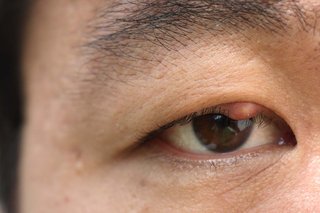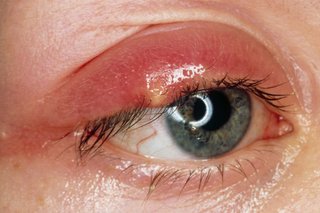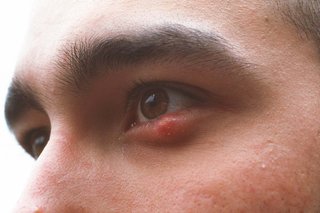Symptoms of a stye



A stye usually only affects 1 eye, but it's possible to have more than 1 at a time and on both eyes.
It's probably not a stye if:
- there's no lump – if your eye or eyelid is swollen, red and watery it's more likely to be conjunctivitis or blepharitis
- the lump is hard but not very painful – this is more likely to be a chalazion
Find out more about chalazions on the Moorfields Eye Hospital website
How you can treat a stye yourself
To reduce swelling and help the stye heal:
- Soak a clean flannel in warm water.
- Hold it against your eye for 5 to 10 minutes.
- Repeat this 2 to 4 times a day.
To relieve the pain, take painkillers such as paracetamol or ibuprofen. Do not give aspirin to children under 16.
Avoid wearing contact lenses and eye make-up until the stye has burst and healed.
Important: Do not burst a stye
Do not try to burst a stye or remove an eyelash yourself. This can spread the infection.
Non-urgent advice: See a GP if:
- a stye does not get better within a few weeks
Urgent advice: Ask for an urgent GP appointment or get help from NHS 111 if:
- a stye is very painful or swollen
- it affects your vision
- your eye is producing pus
- the infection has spread to your eye or eyelid
You can call 111 or get help from 111 online.
Treatment from a GP
If you have a stye, the GP may:
- burst the stye with a thin, sterilised needle
- remove the eyelash closest to the stye
- refer you to an eye specialist in hospital
How to prevent a stye
You can help avoid stye by keeping your eyes clean.
Styes are often caused by bacteria infecting an eyelash follicle or eyelid gland.
You're also more likely to get a stye if you have long-term blepharitis or rosacea.
Do
-
wash your face and remove eye make-up before bed
-
keep your eyelids and eyelashes clean, especially if you have blepharitis
-
wash your hands before putting contact lenses in or taking them out
Don’t
-
do not share towels or flannels with someone who has a stye
-
do not rub your eyes if you have not recently washed your hands
Page last reviewed: 18 April 2024
Next review due: 18 April 2027